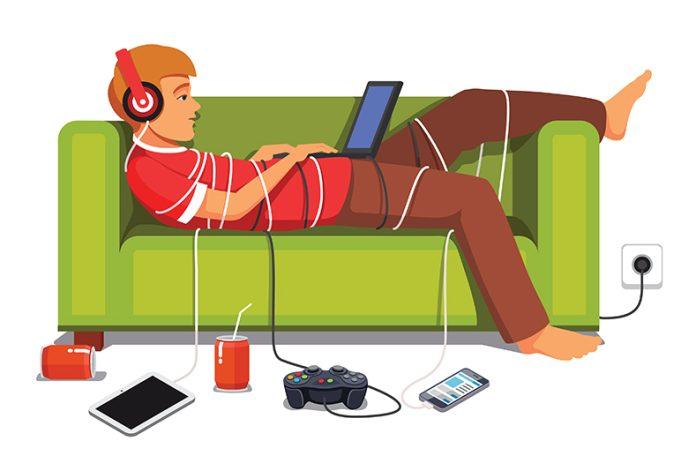Editor’s Note: The California Partners Project conducted a statewide listening tour with California mothers, parents, and caregivers to understand how they navigated the integration of technology and devices into most aspects of their children’s lives. These evolving toolkits and best practices are meant to meet parents where they are. Minimizing Multitasking is the thirteenth toolkit.
Multitasking can be thought of as “task switching” which is moving back and forth from one task to another. In 2020, CPP led a qualitative study to support our Are the Kids Alright? Report in which we found 100% of the teens we interviewed were multitasking. Dr. Kaveri Subrahmanyam, Associate Dean of the College of Natural & Social Sciences at Cal State LA and Associate Director of Children’s Digital Media Center shares that “Contrary to conventional wisdom, multitasking does not make you more efficient. In fact, it seems to extend the time taken to complete both tasks separately.”
Tips to minimize multitasking
Tip 1: Institute tech breaks.
Research psychologist and Professor Emeritus at Cal State, Dominguez Hills Dr. Larry Rosen advises that parents can help kids “learn how to focus.” You can foster this skill by having your child work on a task for a set amount of time with planned breaks to use technology. Start by having your child check their tech and then silence their phone and turn it upside down. Set an alarm for your child to work for 15 minutes and then allow a one-minute break to check their tech. Continue this cycle until your child can build up to 30 minutes on task with tech breaks before and after.
Tip 2: Examine typical phone use together.
Most devices have ways to check how a phone is being used. Dr. Rosen suggests checking three pieces of data: (1) How many minutes the phone is used per day and the apps getting the most use; (2) the number of daily unlocks (pickups); and (3) examine notifications and which apps are sending them. Discuss your findings and decide whether any of these need to be modified to support less distractions.
Tip 3: Explain the drawbacks of multitasking.
Dr. Rosen recommends parents explain that “doing one task at a time let’s your brain process the information deeply and store it in your brain. Trying to do two tasks, even switching back and forth, only allows very superficial processing by your brain and not enough to remember it later. Trying to multitask leads to more stress.”
Tip 4: Be mindful of your own habits.
Dr. Kaveri Subrahmanyam reminds parents to “model healthy digital behavior because research suggests that parents’ digital media use is the single biggest predictor of children’s screen media use.” Parents can model best practices by mindfully planning screen free time, particularly near bedtime, at the dinner table and when connecting with children. Dr. Subrahmanyam is concerned that multitasking “leads one to be less present in the moment and in the interaction.” Think about how you manage multiple devices and how you can demonstrate the value of maintaining focus to complete tasks more efficiently and with less stress.
Resources
https://www.calpartnersproject.org/arethekidsalright
https://www.cdmc.ucla.edu/
http://drlarryrosen.com/
https://www.calstatela.edu/academic/psych/html/subrahmanyam.htm
As California mother’s, we are bringing these toolkits to you through a cross-collaborative campaign. San Francisco Bay Area Moms is proud to be working with Ventura County Mom Collective and Inland Empire Mom Collective. We too, want to “ensure our state’s media and technology industries are a force for good in child development” (part of California Partners Project Mission Statement). #TechTips4CaliMoms




















